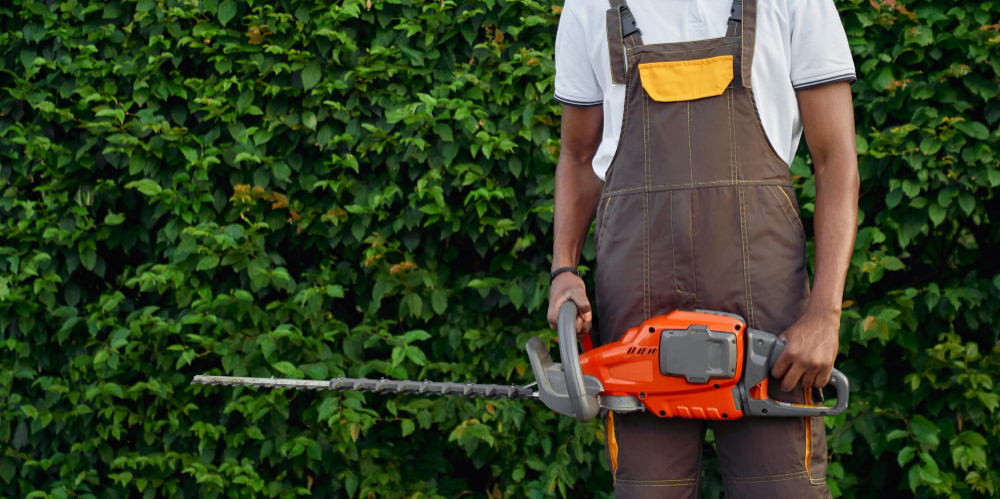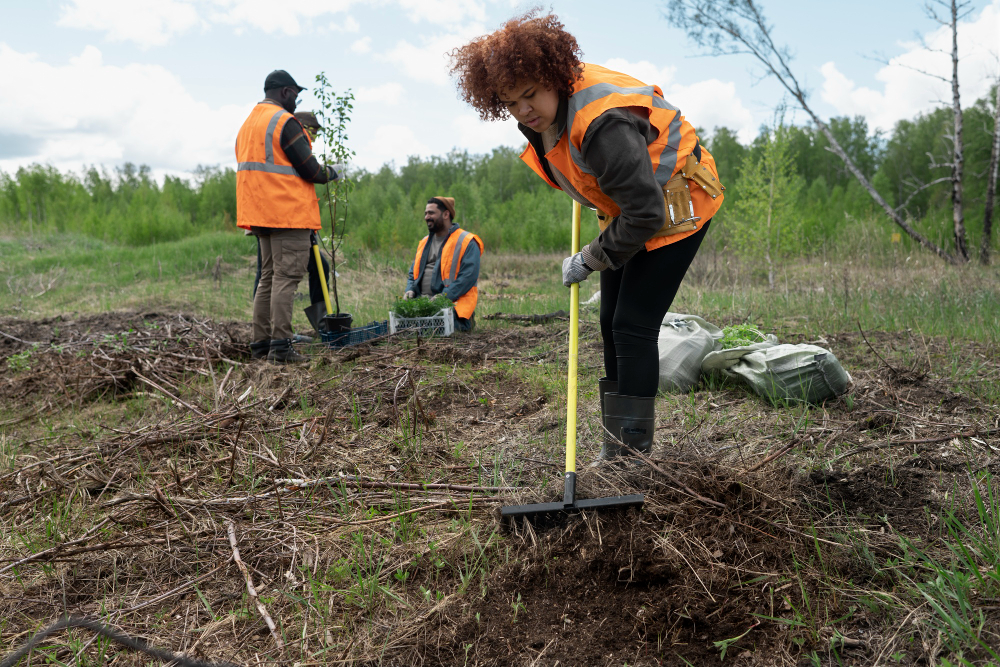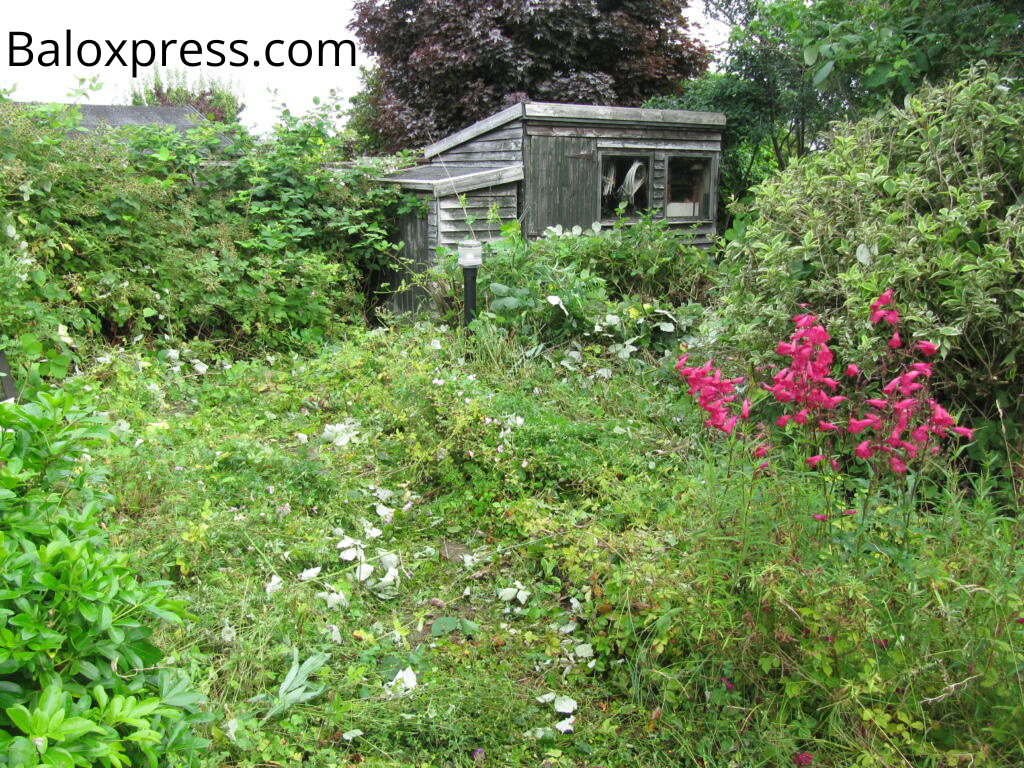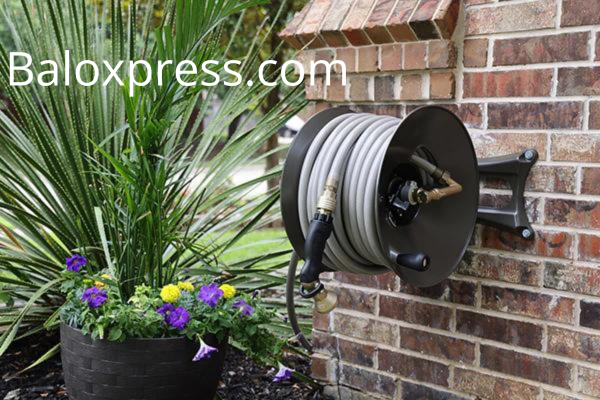An overgrown garden can be a daunting sight for any gardener, but fear not! With the right tools and techniques, you can transform your wild and unkempt garden into a beautiful and manageable space.
Whether you’re dealing with an overgrown lawn, tangled bushes, or invasive weeds, these 5 essential tools will help you clear your garden in no time. Say goodbye to the jungle and hello to a thriving, well-maintained garden with these must-have tools.
Table of Contents
Before listing tools for clearing overgrown garden, it is important that you understand how to identify overgrown areas in your garden.
How To Identify Overgrown Areas in a Garden?
When it comes to identifying overgrown areas in your garden, there are a few key signs to look out for. First, take a step back and observe the overall appearance of your garden. Are there areas that seem chaotic and out of control? Do certain plants or weeds appear much taller or fuller than others? These are indicators that those particular areas in your garden may be overgrown.
Another clue is the presence of dense vegetation or overcrowding. If your plants are growing closely together, competing for sunlight and nutrients, it’s a sign that they need some attention. Additionally, keep an eye out for any plants or trees that are encroaching on pathways or structures. These can pose safety hazards and indicate overgrowth.
Another method for identifying overgrown areas is to compare your garden to a reference point. Consider what your garden should ideally look like and compare it to its current state. If the difference is drastic, then you likely have some overgrown areas that need tending to.
Remember, the key is to trust your instincts and use your judgment. If something looks messy and unruly, chances are it needs some attention. Don’t be afraid to get up close and personal with your plants and inspect them for signs of overgrowth.
By taking the time to identify these areas, you’ll be well on your way to transforming your garden into a beautiful and manageable space.
Issues Overgrown Garden Can Cause
One of the main issues is the competition for sunlight, water, and nutrients among the plants. When the garden becomes overcrowded, some plants in the garden may not receive enough of these essential resources, leading to stunted growth or even death.
Invasive weeds are another common problem in overgrown gardens. These plants can quickly take over and suffocate the existing vegetation, outcompeting them for space, water, and nutrients. This not only hinders the growth of desired plants but also disrupts the overall ecosystem balance.
Overgrown gardens also create hiding places for pests and diseases. The dense vegetation provides a sheltered environment where insects, rodents, and other unwanted critters can thrive. Additionally, overgrown plants are more susceptible to fungal and bacterial infections, as the lack of airflow and sunlight promotes the growth of pathogens.
Safety is also a concern in overgrown gardens. Trees and branches that have grown too close to structures or pathways can pose a risk of falling or causing damage. Moreover, overgrown areas may hide hazards such as uneven ground or hidden debris, increasing the likelihood of accidents.
By understanding the issues that an overgrown garden can cause, you can better prioritize your efforts to clear and rejuvenate your outdoor space. With the right tools and techniques, you can transform your garden into a safe, healthy, and aesthetically pleasing oasis.
5 Essential Tools for Clearing Overgrown Garden
Tool 1: Pruning Shears/Secateurs

One of the most essential tools for clearing an overgrown garden is a pair of pruning shears, also known as secateurs. These handy tools are a gardener’s best friend when it comes to taming unruly plants and bushes.
Pruning shears are designed with sharp blades that allow you to easily cut through branches, stems, and foliage. They come in various sizes, so make sure to choose a pair that is suitable for the thickness of the branches you will be cutting.
With pruning shears in hand, you can remove dead or damaged branches, trim back overgrown shrubs, and shape plants to promote healthy growth. The sharp blades ensure clean cuts, minimizing the risk of damage or infection to the plants.
How to use pruning shears in an overgrown garden?
When using pruning shears, it’s important to follow some few key techniques. First, always start by removing dead or diseased branches, as these can attract pests and spread diseases. Next, thin out overcrowded areas by selectively cutting back branches to improve airflow and sunlight penetration. Finally, shape plants by cutting back excessive growth to maintain a tidy and well-manicured appearance.
Pruning shears are a versatile tool that should be in every gardener’s arsenal. They allow you to take control of your overgrown garden and create a more visually appealing and healthy space. So grab a pair of pruning shears and get ready to transform your garden one snip at a time!
Tool 2: Loopers
Loopers are another essential tool for clearing an overgrown garden. They are specifically designed to tackle thicker branches and stems. With their sharp blades and leverage, they make cutting through larger vegetation a breeze.
Loopers are particularly useful for cutting back trees and shrubs that have become overgrown. Their long handles allow you to reach higher branches without the need for a ladder, making them a safer alternative to using a chainsaw. Loopers also give you better control over the cutting process, allowing you to make clean and precise cuts.
How to use loopers in an overgrown garden?
Start by identifying the branches that need to be pruned, focusing on dead or damaged wood, as well as any branches that are crossing or rubbing against each other. Position the blades of the loopers around the branch and squeeze the handles together, using the leverage to cut through the wood. Take care not to overexert yourself, as loopers can be quite heavy and require some strength to operate.
Loopers are a versatile gardening tool that should be a staple in any gardener’s toolbox. They make it easy to tackle overgrown trees and shrubs, allowing you to reclaim your garden and create a more open and aesthetically pleasing space. With loopers in hand, you’ll be well on your way to transforming your jungle into a thriving oasis.
Tool 3: Chainsaws for Clearing Out Bigger Trees in the Garden
When it comes to tackling the larger trees in your overgrown garden, a chainsaw is the best tool for the job. Chainsaws are incredibly powerful and efficient, making them perfect for quickly and effectively clearing out bigger trees.
With their sharp and sturdy blades, chainsaws can easily cut through thick branches and trunks, allowing you to take down overgrown trees with ease. They save you time and energy compared to using manual tools like handsaws or axes.

Chainsaws also provide better control over the cutting process, allowing you to make precise cuts and avoid any potential accidents.
However, it’s important to remember that chainsaws are heavy and require proper handling and safety precautions. Make sure to wear protective gear, such as goggles, gloves, and ear defenders, to protect yourself from flying debris and excessive noise. Additionally, always read and follow the manufacturer’s instructions for your specific chainsaw model.
How to use Chainsaws in an overgrown garden?
When using a chainsaw, start by identifying the branches or trunks that need to be removed. Make strategic cuts to avoid any potential hazards, such as nearby structures or power lines. It’s also important to properly dispose of the cut branches and trunks, whether that’s through mulching or professional tree removal services.
By using a chainsaw to efficiently clear out bigger trees, you’ll be well on your way to transforming your overgrown garden into a more manageable and aesthetically pleasing space. Just remember to prioritize safety and take the necessary precautions to ensure a successful and safe tree-clearing experience.
Tool 4: Bow Saw for Cutting Through Denser Vegetation
When it comes to cutting through denser vegetation in your overgrown garden, a bow saw is an essential tool to have. Unlike pruning shears or loopers, a bow saw is designed to tackle thicker branches and even small trees. With its sturdy frame and sharp, serrated blade, the bow saw can make quick work of cutting through dense vegetation.
To use a bow saw effectively, start by identifying the branches or shrubs that need to be cut. Position the saw at the base of the branch and use long, smooth strokes to saw back and forth. The unique shape of the bow saw allows for efficient cutting, even in dense and tough vegetation.
The bow saw is particularly useful for cutting through branches that are too thick for pruning shears or loopers. It can also be handy for removing dead or damaged wood, clearing pathways, and shaping overgrown shrubs. Its versatility and ability to tackle denser vegetation make it a valuable tool in your arsenal for clearing your overgrown garden.
Remember, safety is crucial when using a bow saw. Always wear protective gear, such as gloves and goggles, and be cautious of your surroundings.
With the bow saw in hand, you’ll have no problem taking on the challenge of cutting through denser vegetation and transforming your overgrown garden into a neat and tidy space.
Tool 5: Weed Whacker/String Trimmer
When it comes to tackling stubborn weeds and unruly grass in your overgrown garden, a weed whacker or string trimmer is a game-changer. This garden tool is designed to cut through dense vegetation with ease, giving your garden a neat and well-manicured look.
The weed whacker consists of a motorized engine that spins a nylon string at high speeds, cutting through grass and weeds in its path. It’s perfect for those hard-to-reach areas, such as along fences, walls, and garden edges, where a lawnmower can’t reach.
How to use a weed whacker in an overgrown garden?
Using a weed whacker is simple and efficient. Hold the tool at an angle, keeping it just above the ground or vegetation, and let the rotating string do the work. Move it back and forth in a sweeping motion to trim the grass or weeds to the desired length.
The weed whacker is also versatile and can be equipped with various attachments, such as blades or brush-cutting heads, to tackle tougher vegetation like small saplings or dense brush. Just make sure to follow the manufacturer’s instructions for safe and effective use.
With a weed whacker in hand, you can easily tackle those pesky weeds and give your garden a polished and well-maintained appearance.
Now that we have shown you the tools that can help you tackle your overgrown garden, we must help you with the steps to follow for clearing your garden.
5 Steps for clearing an overgrown garden effectively
STEP 1: Make a plan
Having a clear understanding of your overgrown garden is essential before you start tackling it. Take a walk around and get a sense of the size, layout, and overall condition of the space. Identify any specific areas that require immediate attention, such as areas with dense weed growth or trees that need pruning. Take note of any existing plants or features that you want to keep or incorporate into your new design.
Once you have a good overview of your garden, it’s time to make a plan. Determine what your goals are for the space and what you want to achieve with your garden makeover. Consider factors such as the amount of time and effort you are willing to invest, as well as your budget. Sketch out a rough plan of how you want your garden to look, including any new features or planting areas.
By taking the time to get an overview and make a plan, you will have a clear roadmap for your garden transformation. This step is crucial in ensuring that you stay organized and focused throughout the process. So grab a pen and paper and start visualizing the garden of your dreams!
STEP 2: Assemble your tools and materials
Now that you have a plan in place, it’s time to gather your tools for clearing overgrown garden and get ready to tackle your overgrown garden. Assembling the right tools and materials will make the process much smoother and more efficient. Here are some essential tools you’ll need:
1. Gloves: Protect your hands from thorns, prickles, and any potential irritants in the garden. Invest in a good pair of gardening gloves that fit well and provide ample protection.
2. Pruning shears: These will come in handy for trimming and cutting back overgrown plants and branches. Look for a sturdy pair that can handle thick branches.
3. Weed puller or hoe: To effectively remove weeds, you’ll need a tool specifically designed for the task. A weed puller or hoe will help you uproot weeds from the root, preventing them from growing back.
4. Rake: A rake is essential for clearing leaves, debris, and other loose materials from the garden. Choose one with sturdy tines that can handle heavy-duty tasks.
5. Wheelbarrow or garden cart: If you have a large garden, a wheelbarrow or garden cart will be invaluable for transporting tools, plants, and debris around the space.
By gathering these tools before you start, you’ll save yourself time and frustration later on. Having the right equipment on hand will ensure that you can tackle any task that comes your way. So, grab your tools and get ready to transform your overgrown garden!
STEP 3: Clear weeds
Welcome to Step 3 of clearing your overgrown garden! Now that you have your plan and tools ready, it’s time to tackle the rubbish, weeds, and wild overgrowth that have taken over your space. This step can be the most challenging but also the most rewarding. Start by removing any large debris or trash that may have accumulated in your garden.

Then, get down and dirty with those weeds. Use your weed puller or hoe to uproot them from the root, ensuring they won’t grow back. As you clear the weeds, be mindful of any desirable plants that may be hiding among them. Once the weeds are cleared, it’s time to tackle the wild overgrowth. Trim back any unruly plants or branches, giving your garden a fresh and tidy look. Remember, this step may take some time and effort, but the end result will be well worth it. Keep up the good work, and stay tuned for Step 4: getting your shrubs into shape!
STEP 4: Get shrubs into shape
Now that you’ve cleared out the rubbish, weeds, and wild overgrowth from your garden, it’s time to focus on getting your shrubs into shape. This step is essential for creating a well-manicured and organized garden. Start by identifying any shrubs that have become overgrown or unruly. Use your pruning shears to trim back any branches that are blocking walkways or growing into other plants.
Be sure to maintain the natural shape of the shrubs while removing any dead or damaged branches. Take your time with this step and step back frequently to assess the overall look and balance of your shrubs. With a little pruning and shaping, your shrubs will add structure and beauty to your newly cleared garden. Keep up the great work! Next up, we’ll discuss how to create new beds and areas in your garden.
STEP 5: Create new garden beds and areas
Now that you’ve cleared out the rubbish, weeds, and overgrown shrubs, it’s time to get creative and create new beds and areas in your garden. This step allows you to add your personal touch and transform your space into a truly unique and beautiful garden. Start by considering the layout and flow of your garden. Think about where you want to create new beds for planting flowers, vegetables, or herbs. You can use garden edging or border materials to define the new beds and give them a polished look.
Lastly, you need to consider adding new features such as a seating area, a bird bath, or a decorative focal point. These elements will not only enhance the visual appeal of your garden but also create a functional and enjoyable outdoor space. Let your imagination run wild and have fun designing your new beds and areas. Remember, the possibilities are endless!
Our Conclusion
In the battle against an overgrown garden, these 5 essential tools are your secret weapons for victory. From pruning shears and loopers to chainsaws, bow saws, and weed whackers, each tool plays a crucial role in taming the wild and turning your garden into a flourishing oasis.
With the help of pruning shears, you can trim back unruly branches and shape plants to promote healthy growth. Loopers are perfect for tackling thicker branches and trees that have taken over your garden.
Chainsaws make quick work of larger trees, clearing the way for new growth. Bow saws are ideal for cutting through denser vegetation and clearing pathways. And the weed whacker is the ultimate weapon against stubborn weeds and grass.
By using these tools in combination, you can reclaim your garden from the grips of overgrowth and create a beautiful and manageable space. Say goodbye to the chaos and hello to a garden that thrives.
So gather your tools, roll up your sleeves, and get ready to transform your overgrown garden into the stunning outdoor space you’ve always dreamed of. With a little time, effort, and the right tools, your garden will be the envy of the neighborhood. Happy gardening!





2 Comments
You have created an outstanding article on 5 tools for cleaning an overgrown garden. In some places, you have written 15 by mistake. If you correct them will be best for the reader. Otherwise, it’s confusing. Thanks
thank you so much